Her own path: Janet Cumbrae Stewart
Janet Cumbrae Stewart was a leading artist in pastels and portraiture and, despite being largely sidelined from the history of Australian art in the second half of the 20th century, was considered one of Melbourne’s most significant artists between 1910 and 1920. During this time she had remarkable success both in Australia and overseas.
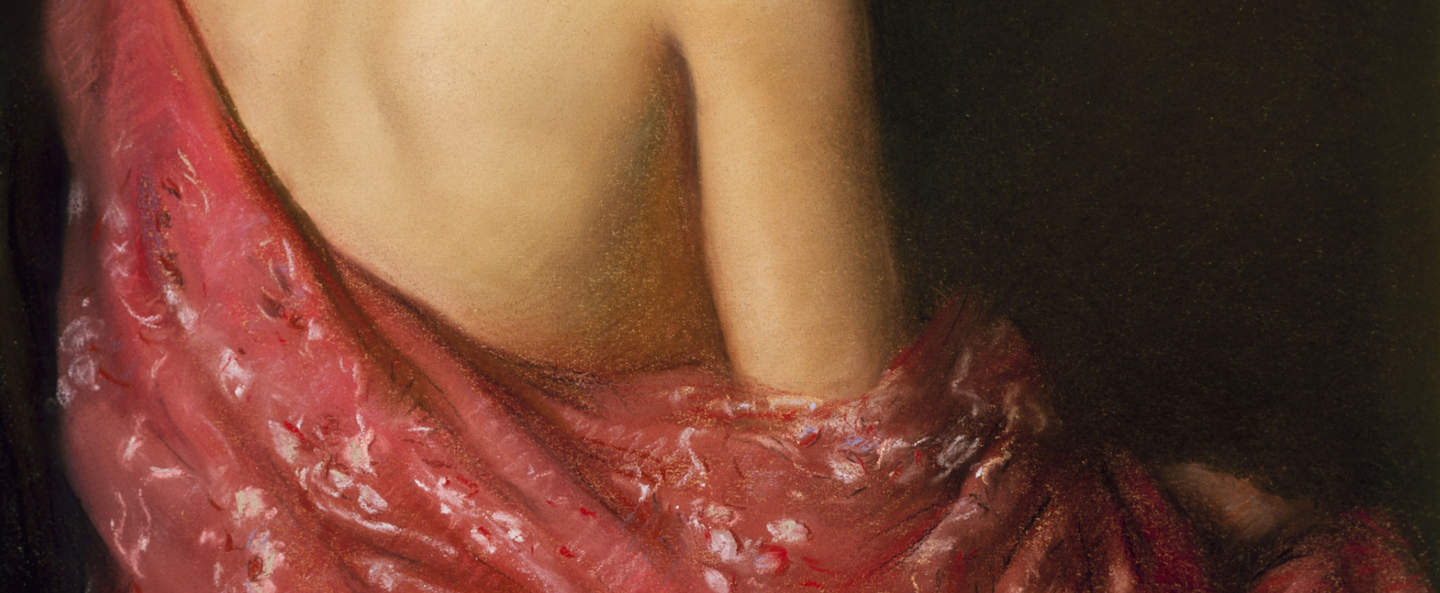
Janet Cumbrae Stewart, Portrait of Jean Shaw (detail) 1918, pastel. Cbus Collection of Australian Art, as advised by Dr Joseph Brown AO, OBE. © Estate of Janet Cumbrae Stewart
Early years in Bayside
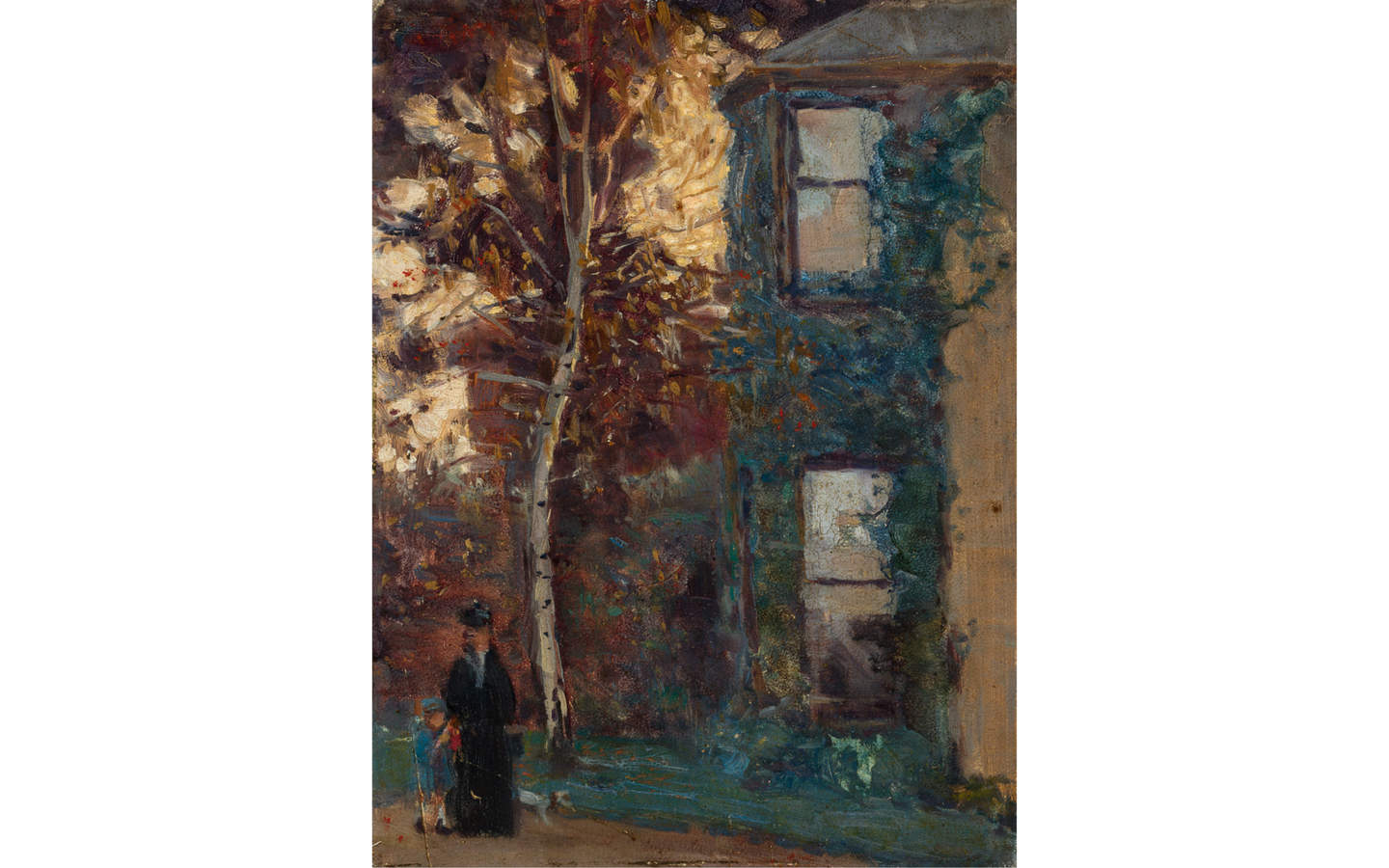
Janet Cumbrae Stewart, Montrose 1909, oil on board. Private collection, Melbourne. © Estate of Janet Cumbrae Stewart
Janet Agnes Cumbrae Stewart (1883-1960) was born on 23 December 1883 at ‘Montrose’ in Brighton to a wealthy family. Her father, Frances Edward Stewart, worked as a chief inspector for the National Bank before becoming a managing director at wool broking and stock agent firms and her mother, Agnes Park, was busy with 10 children, of which Janet was the youngest.
Montrose, depicted above by Janet in 1910 with her mother and niece Agnes Katherine and pet dog, was purchased by the Stewarts in 1881 and was originally called South Beach House. Located on the corner of Were Streets and Cairnes Crescent, Brighton, Montrose was a 20-roomed house which sat amongst beautiful gardens and was surrounded by seven acres of land. The land was eventually subdivided and the house was demolished however the family’s long connection to the area was commemorated with nearby Stewart Street named in their honour.
Studies
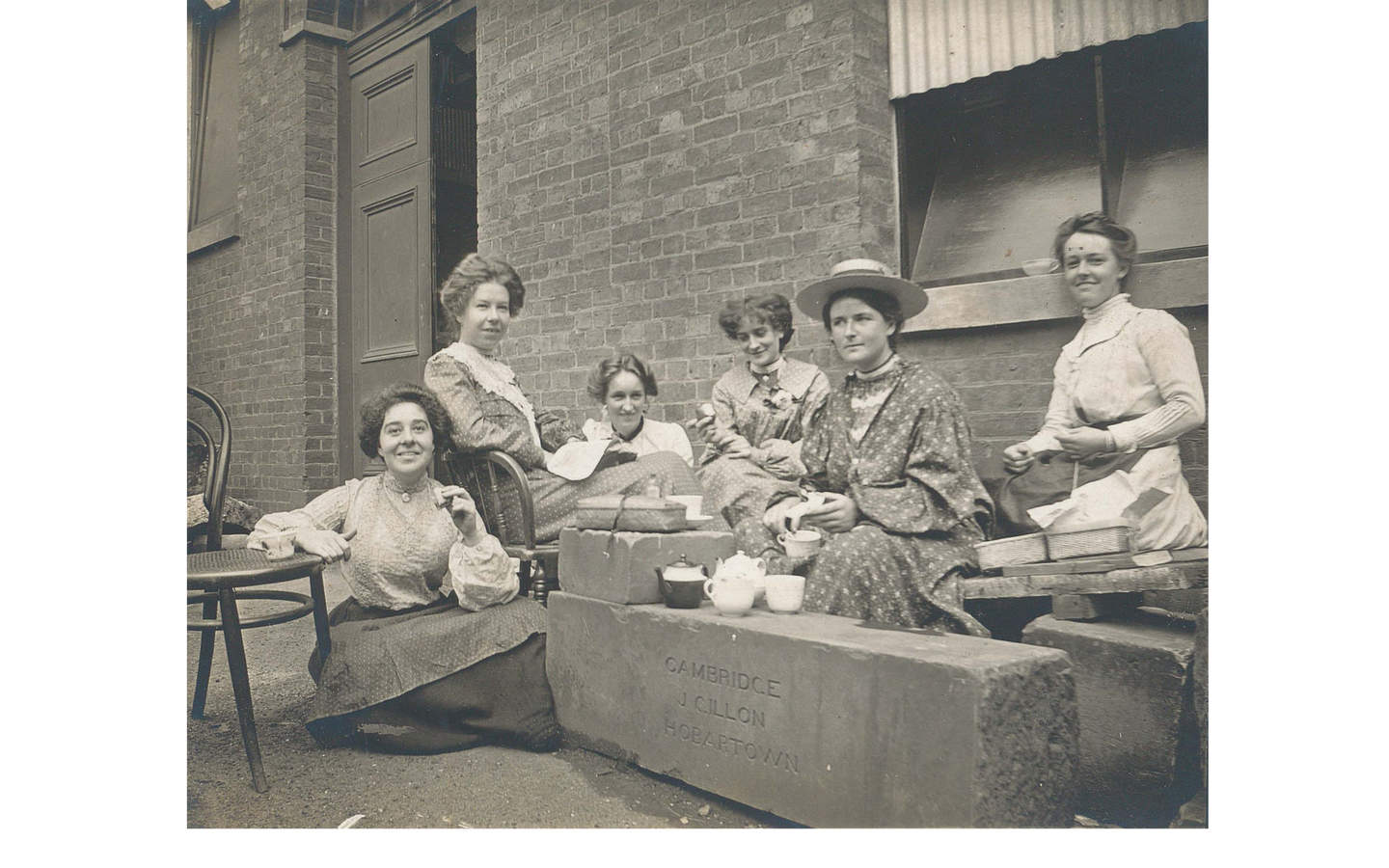
National Gallery Art School, Melbourne c.1901-1906, Janet Cumbrae Stewart photo album. Private collection, Melbourne.
While her brothers attended various schools including Brighton Grammar, Haileybury College and Geelong Grammar, as with many daughters of wealthy families of that period, Janet was educated at home with a governess, save for three terms she spent learning at Manor House where fellow Her Own Path artist Norah Gurdon also attended. [1]
Janet showed an early interest in art, dipping her finger in milk and bread to draw cows on the tablecloth at the age of three and later rubbing out pencilled writings in her father’s old cash books so that she could fill them with her drawings.[2]
She attended outdoor sketching trips with John Mather before attending the National Gallery Art School between 1901 and 1907, under Bernard Hall and Frederick McCubbin, despite her father’s resistance. While at the Art School she won numerous awards including third prize for Drawing a Head from Life in 1903, first prize for Drawing from Antique in 1904 and first prize for Still Life Painting in 1905. That same year she was also awarded second place in the National Gallery travelling scholarship competition and in 1906 she won second prize in the Half Nude Painting and Life Drawing categories. Read more about The National Gallery Art School.
In the photograph above, we see Janet Cumbrae Stewart (third from right) with fellow Her Own Path artists Jessie Traill (second from right) and Norah Gurdon (right) having a tea break at the National Gallery Art School in Melbourne. The three women, who were to go on to become professional artists, all hailed from wealthy Brighton families and were to remain lifelong friends.
Her Name
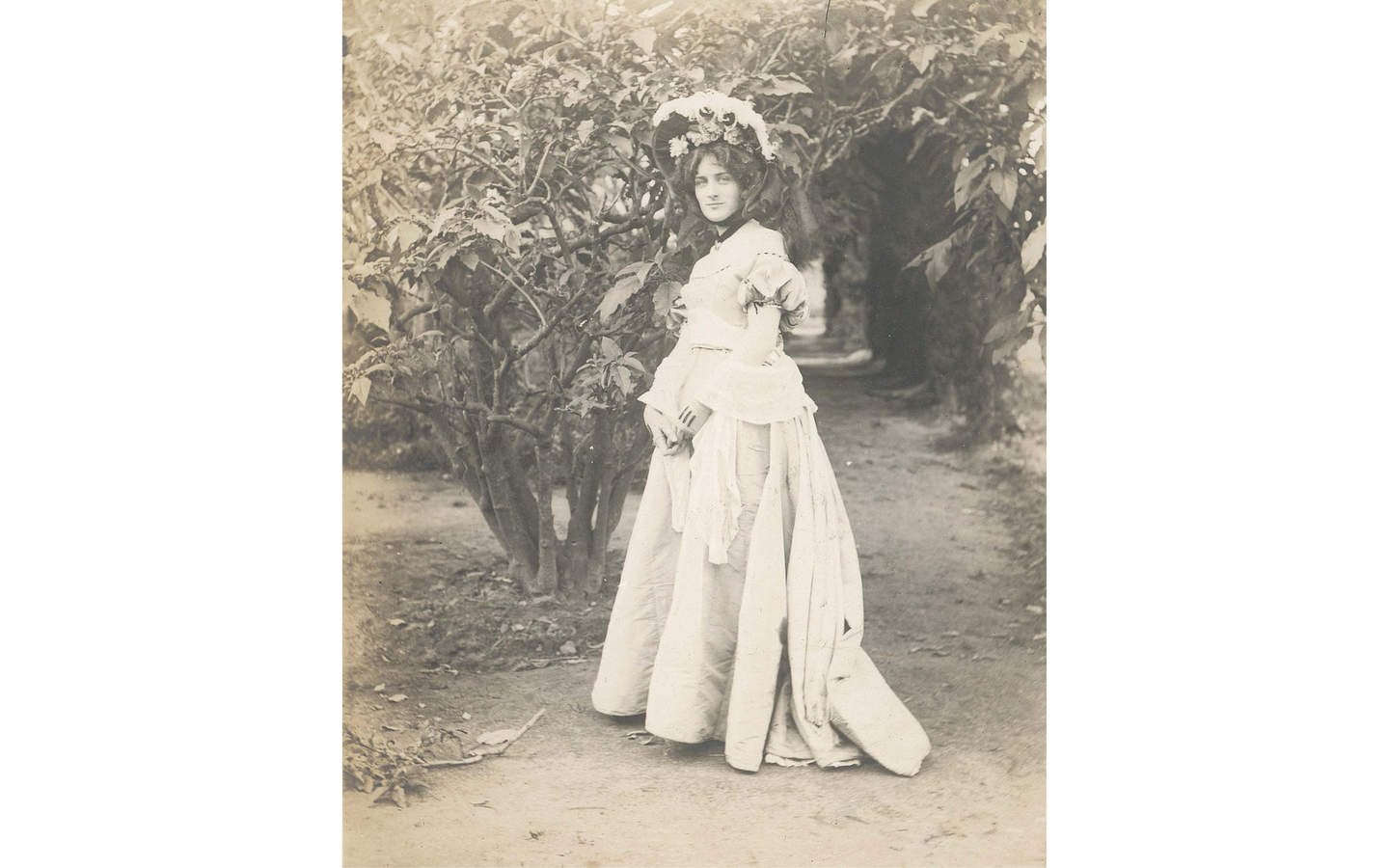
Photograph of Janet Cumbrae Stewart. Private collection, Melbourne.
After her oldest brother Francis William Sutton, a lawyer and professor, added the name Cumbrae to his surname in 1889 to distinguish himself from other Stewarts, the siblings were soon to follow, adopting Cumbrae-Stewart as their surname. Janet dispensed with the hyphen and simply signed her work Cumbrae Stewart without a first name or initial, to ensure her work would be judged on merit alone rather than her gender.[3]
Early success in her career
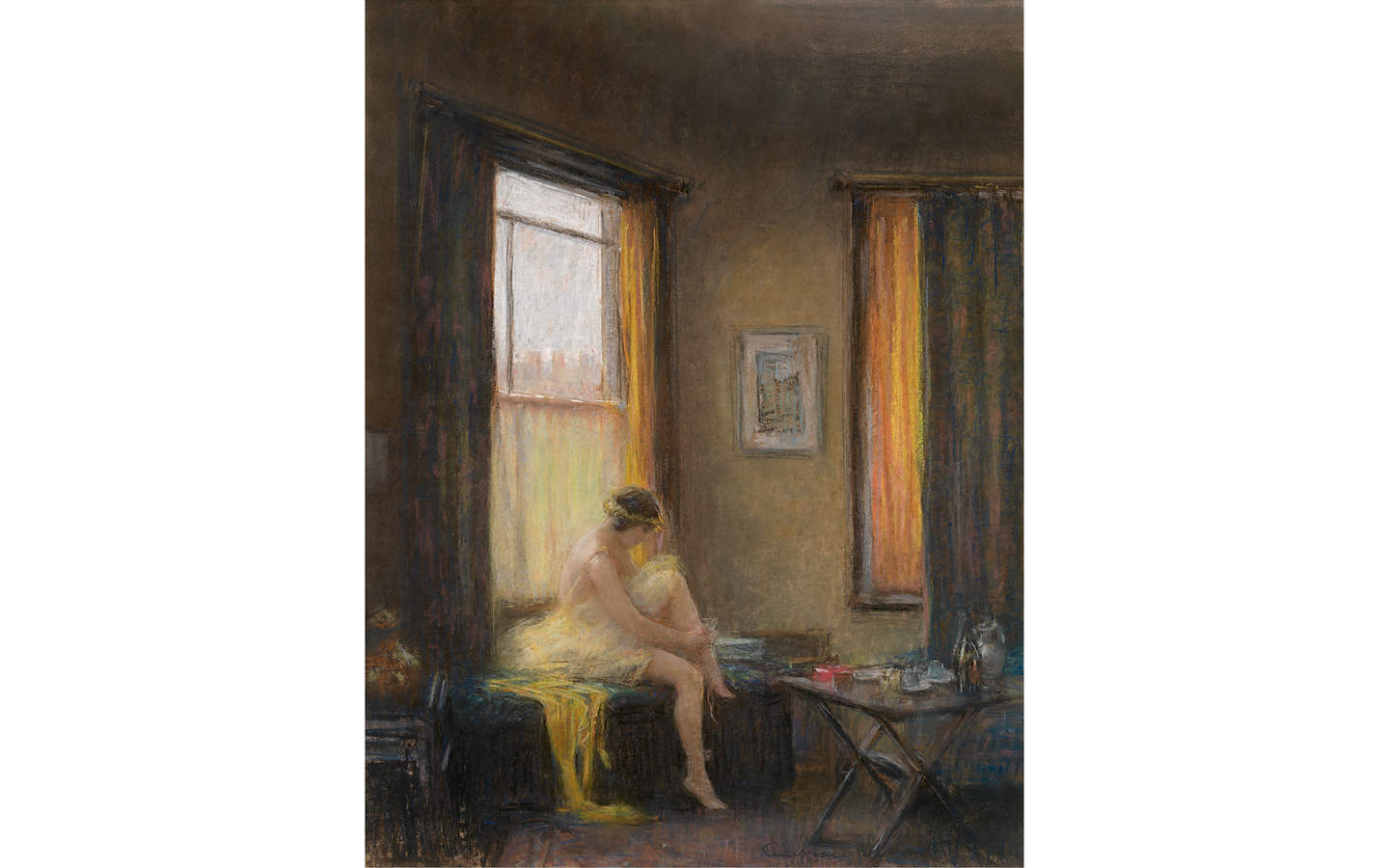
Janet Cumbrae Stewart, Studio fairy 1920s, pastel, 64.8 x 50.2 cm. National Gallery of Victoria, Melbourne Felton Bequest, 1930. © Estate of Janet Cumbrae Stewart.
While still a student at the National Gallery Art School, Cumbrae Stewart was selected to show her work at the Exhibition of Women’s Work in Melbourne and was to exhibit regularly at the Victorian Artists’ Society between 1909-1919, becoming elected to the Council in 1914.
In 1910 Cumbrae Stewart, along with Edith Alsop, Ida Rentoul Outhwaite and Jessie Traill, were commissioned to produce works for the new children’s wing at the Homeopathic Hospital in Melbourne, an undertaking they did without remuneration. The following year Cumbrae Stewart held her first solo exhibition at the Coles Book Arcade, which was a great success. She sold many works including to artists Rupert Bunny and Bernard Hall, which would have been an immense honour given Hall was also the Head of the National Gallery Art School.[4]
In 1915 she won a silver medal for her large figure study Life and roses at the Panama-Pacific International Exposition in San Francisco, the same year that Traill received her gold medal for etching.
In 1921 John Shirlow published a book about Cumbrae Stewart’s pastels, which was quite a feat given it would have been an unusual at the time for a writer to devote a book to a living female artist. Her mainstream success saw her become ‘one of the first women artists in Melbourne to rise to a level of public acclaim that equalled that accorded to male artists’. At that time she was classed as one of the best pastellists in the world.[5]
Public Recognition
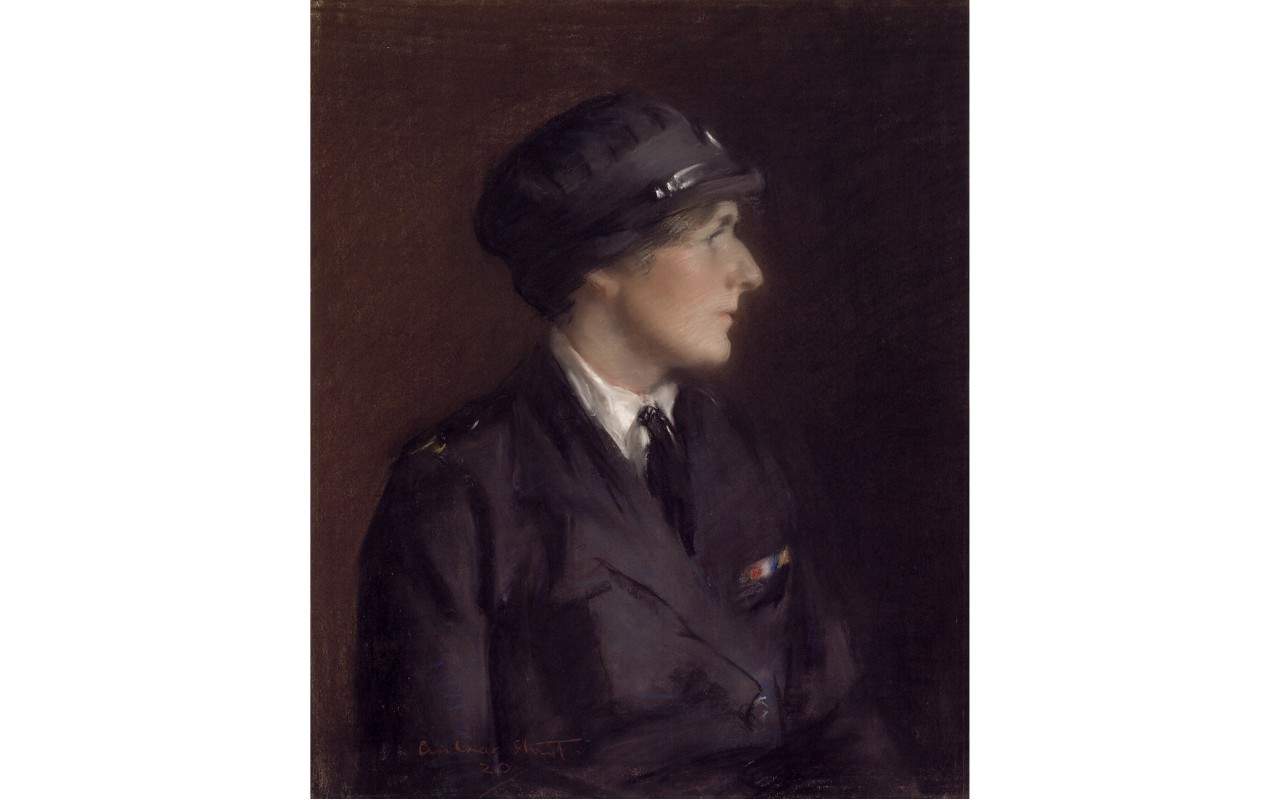
Janet Cumbrae Stewart, 'Portrait of Jessie C.A. Traill' 1920, pastel, 55.5 x 45.4cm. National Gallery of Victoria, Melbourne. Gift of Jessie Traill, 1961. Courtesy Estate of Janet Cumbrae Stewart.
Unlike the other women in Her Own Path, Cumbrae Stewart’s practice was appreciated by art establishments early on and in 1916 the first public acquisition of her work took place when the Art Gallery of South Australia purchased A French girl. This was followed by purchases of three pastel portraits in 1918 by the Art Gallery of New South Wales, including Florence Dombey and The model disrobing (both 1917), pictured above.
The National Gallery of Victoria now holds 11 works including the remarkable Portrait of Jessie CA Traill (1920) in her VAD nurse military uniform seen above, which was donated by Traill in 1961.
Style
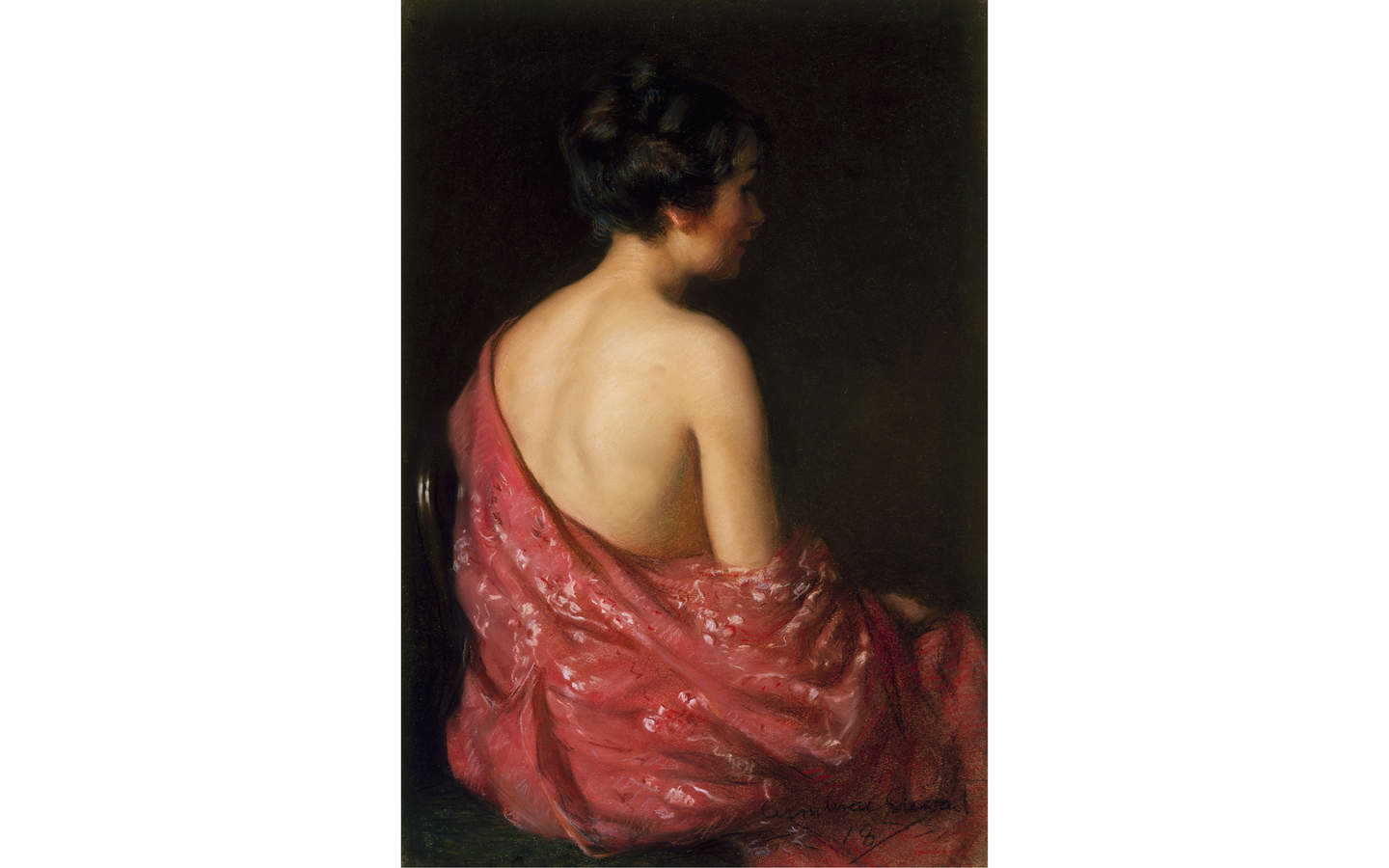
Janet Cumbrae Stewart, Portrait of Jean Shaw 1918, pastel. Cbus Collection of Australian Art, as advised by Dr Joseph Brown AO, OBE. © Estate of Janet Cumbrae Stewart
Cumbrae Stewart, while proficient in watercolour and oil paintings, devoted her practice largely to pastel drawing, particularly portraiture including that of children and the female nude, a traditionally male subject. Her work is appreciated for its technical proficiency in her consistent treatment of design, colour and precision.
A common subject of Cumbrae Stewart is the nude, or partially clothed female, viewed from the back, void of superfluous background detail as seen above in A portrait of Jean Shaw (1918), in which the intense red shawl plays against the sitter’s soft luminous skin tones.
Time Abroad
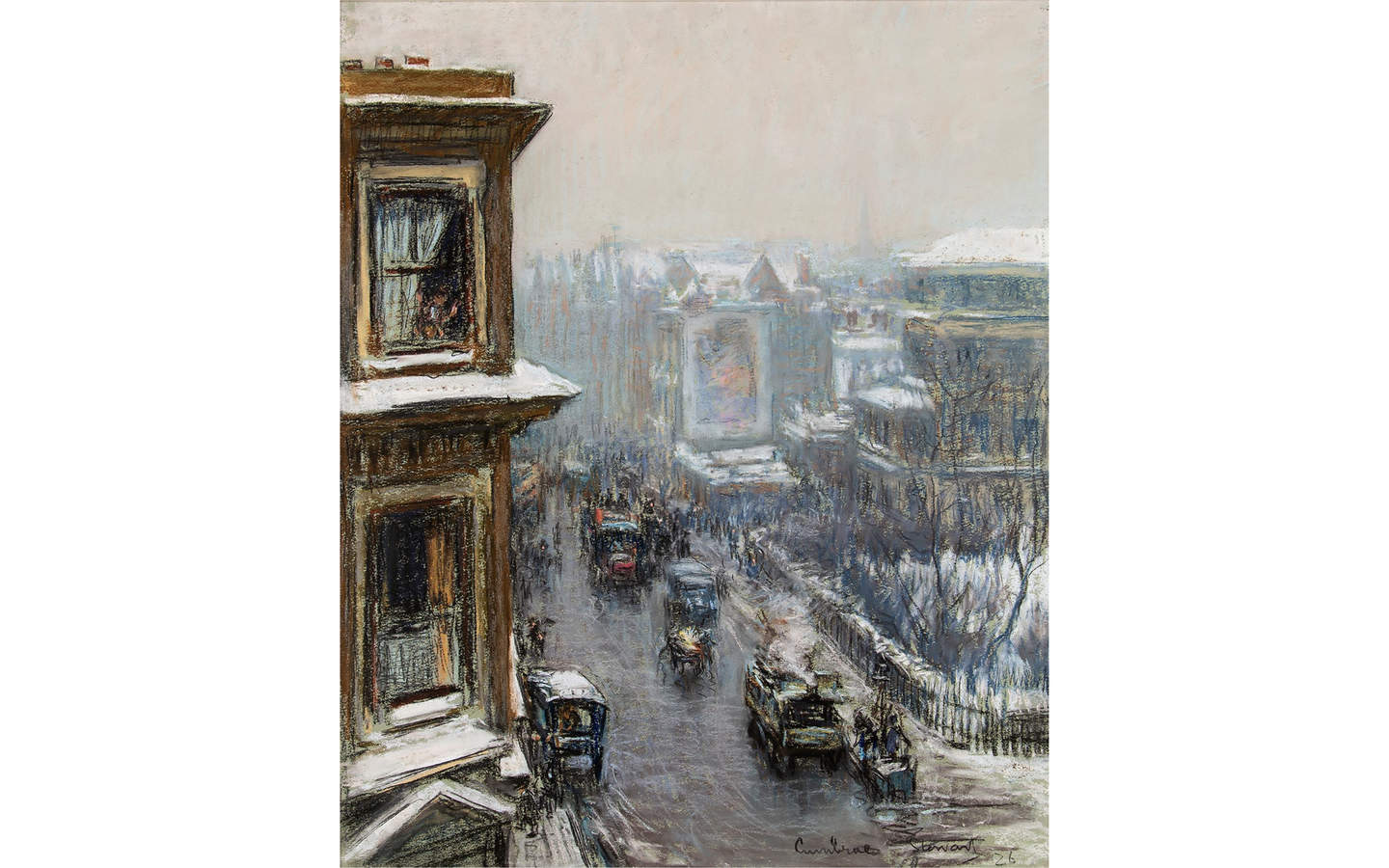
Janet Cumbrae Stewart, View from a Window, London, 1926, pastel, 46 x 38cm, Cruthers Collection of Women’s Art, The University of Western Australia © Estate of Janet Cumbrae Stewart
Despite establishing herself as a prominent artist in Australia, Cumbrae Stewart took a risk in 1922 by moving overseas, where she had to start afresh. In 1923 she held her first solo exhibition at Walker’s Gallery in London, which was another success. The work above, View from a window, London (1926) was completed following Janet’s move overseas and depicts the busy city streets of London bustling with motor vehicles and people.
Cumbrae Stewart built a considerable reputation while abroad, exhibiting regularly at prominent venues including the Old Salon in Paris, the Royal Society of Portrait Painters and the Royal Academy in London, the Venice Biennale and Beaux Arts Gallery. Queen Mary purchased several of her works and she was invited to do portraits of the young princesses Elizabeth and Margaret, however these never eventuated.
She was to remain overseas for the next seventeen years living at Caen and Avignon in France and at Laigueglia in Italy with her partner Billy Bellairs (Miss Argemone Ffarington Bellairs), who was also Cumbrae Stewart’s publicist and business manager. While in Europe, she also continued to exhibit at commercial Australian galleries by regularly sending work home.
Return to Australia
Cumbrae Stewart returned to Australia with Billy Bellairs in 1939 to visit family, staying on due to the outbreak of war and then remaining here until her death in 1960. After initially staying with her sister at Brighton, she split her time between a house in South Yarra and Wanna, her property in Hurtsbridge where she built a cottage and art studio made from materials taken from the old stables and coach house at Montrose.[6]
While still practicing into the 1950s, she shied away from publicity and was not overly active in the art scene. She received little critical attention in the second half of the 20th century until a major solo exhibition staged by Mornington Peninsula Regional Gallery in 2003 reintroduced audiences to her work.
______________________________________
[1] Cumbrae-Stewart, Janet, ‘The Book of Montrose’ in Robinson, Stewart, The Stewart Document: Family History Book, Self-published: Coomoora, Vic, 2014, p.286
[2] Cumbrae-Stewart, Janet, ‘Biography of Beatrice Cumbrae-Stewart’ in Robinson, Stewart, The Stewart Document: Family History Book, Self-published: Coomoora, Vic, 2014, p.223
[3] Burke, Janine, Australian women Artists: 1840-1940, Greenhouse Publications, Collingwood, 1980, p.60
[4] James, Rodney, & Cumbrae Stewart, Janet & Mornington Peninsula Regional Gallery, Janet Cumbrae Stewart: the perfect touch, Mornington Peninsula Regional Gallery, Vic., 2003, p.5
[5] Peers, Juliette and Melbourne Society of Women Painters and Sculptors, More than just gumtrees: a personal, social and artistic history of the Melbourne Society of Women Painters and Sculptors, Melbourne Society of Women Painters and Sculptors in association with Dawn Revival Press, Melbourne, 1993, p.65
[6] Cumbrae-Stewart, Reginald, ‘Montrose – my childhood years’, in Robinson, Stewart, The Stewart Document: Family History Book, Self-published: Coomoora, Vic, 2014, p.254
Interested in learning more about the Art and Heritage Collection?
Bayside City Council is the custodian of the Bayside Art and Heritage Collection, a collection of around 2,000 items that was principally formed when the former Sandringham and Brighton City Councils merged in 1994. Artworks and heritage objects are displayed at our Corporate Centre in Sandringham, Bayside Gallery in Brighton and other Council owned buildings.
Do you want to know what's on in Bayside?
Subscribe to the Bayside Arts e-newsletter and you'll receive the latest news, public program information and invites to exhibition openings.